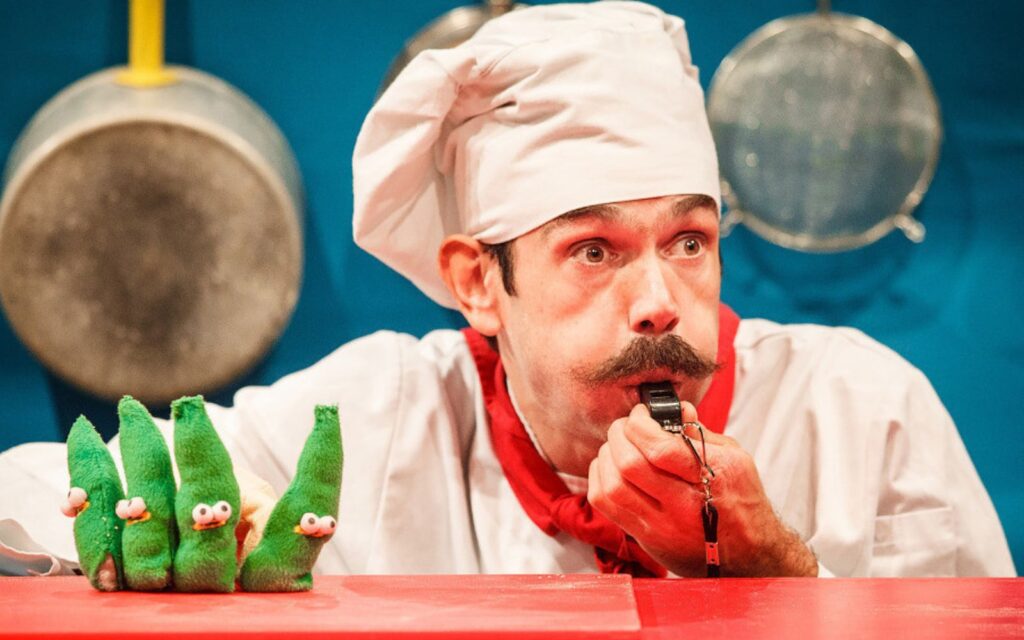Williams himself went back over and over to his themes, writing numerous works of various lengths, often about the same characters in similar situations, something that seems once to have been more acceptable in an artist than it is today. “We don’t give ourselves space to continually investigate, to ask ourselves what drives us as artists,” Smith notes. “Monet spent years and years painting lily pads. He was obsessed. It’s ok to say that I’m not done with Tennessee Williams, I’m not done with investigating these people. I want to keep driving through. It’s not about changing or evolving but hunting for something. I’m looking to connect, to see how his ideas have evolved. But I feel the pressure to change, it’s easy to say about myself that I’m ‘not a finisher.’”
It’s not as though Smith will ‘reach the end’ of Williams anytime soon. Williams was one of the most prolific playwrights the world has known, with 25 full-length plays to his name and umpteen one-act plays, most often dealing with the pressures and repression inherent in experiences of family life, of sexuality, especially in the forced denial of homosexuality, and of mental health. “He was so ahead of his time,” notes Smith. “He had the idea of exploring mental states, the psyche of a person.” Williams’s sister Rose suffered mental breakdowns and was eventually forced to undergo a lobotomy, a disastrous procedure, after which she was institutionalised. “Laura in The Pretty Trap and in The Glass Menagerie is Williams trying to deal with that, to make it all work,” notes Smith. He says there’s a lot of glee for him in recognising the blueprints of Williams’s most famous characters in these shorter plays. “We see the Stanley archetype in the Winfield family, we see the young Laura trying not to become her mother, who is a model for Blanche in A Streetcar Named Desire,” he notes. “It’s so fascinating to see these earlier ‘sketchings’. I’ve been going through every journal reading the inner workings of Tennessee’s mind. It’s exciting to delve into these guys before we met them. I feel naughty and fascinated at the same time.”
Smith talks about Williams as creating a ‘theatre of now’. “He created a ‘theatre of now’, and the ‘theatre of tomorrow’.” Referring to the subtext shuddering beneath nearly all of Williams’s dialogue, Smith says: “His characters are walking on eggshells. The earth could crack open at any minute. There’s a challenge for us in presenting these compacted epic plays where the characters hit the ground running. Ten minutes into the play and they’re falling in cracks. He has such a poetic mind. His writing is dark and beautiful and ugly.”
The director couldn’t be happier with his cast. “It’s the first time I’ve worked with TBC Theatre. Fleur (TBC’s Creative Producer Fleur Murphy) and I play with two ideas, one being that these plays are his new start of ideas. Tennessee was testing a lot of stuff. With these 30 minute versions of his great plays we pull apart everything we now know about him and his world, what was driving him, how they were cathartic. These are perfect pairings: these two pieces are very similar and they sit well together. This is an artistic investigation in the right order, we get to see cyclical events happening. We had to ask ourselves with both plays, should we do this in real time? It’s a fun thing to play with. We look at real space versus imaginary space. A million things could be happening. The characters are like ducks on the river, they’re kicking like crazy underneath.”
Smith is learning as much about himself as he is about Williams. “As a director I’m learning how to inspire rather than dictate. You can find answers in the work. I am having the best time. I’m blessed to have this cast. They’re doing a tremendous job. It’s demanding of us all. I couldn’t have made it without these actors.”
There was never a question of trying to modernise or in any way Australianise the plays. “We thought we couldn’t not use the southern accents,” Smith says. “The plays are set all over that area, New Orleans, Mississippi and the language contains those rhythms, in that passionate accent, there is heat and sexuality. It’s a mixed bag re area of time – the works deal with nostalgia, they are memory plays; they sit between worlds. We have all the characters on stage, foreshadowing the future. We create an abstract kind of disjointed playground, the lighting and atmosphere play a huge part in creating the right feeling for the internal and external worlds.”
BY LIZA DEZFOULI







